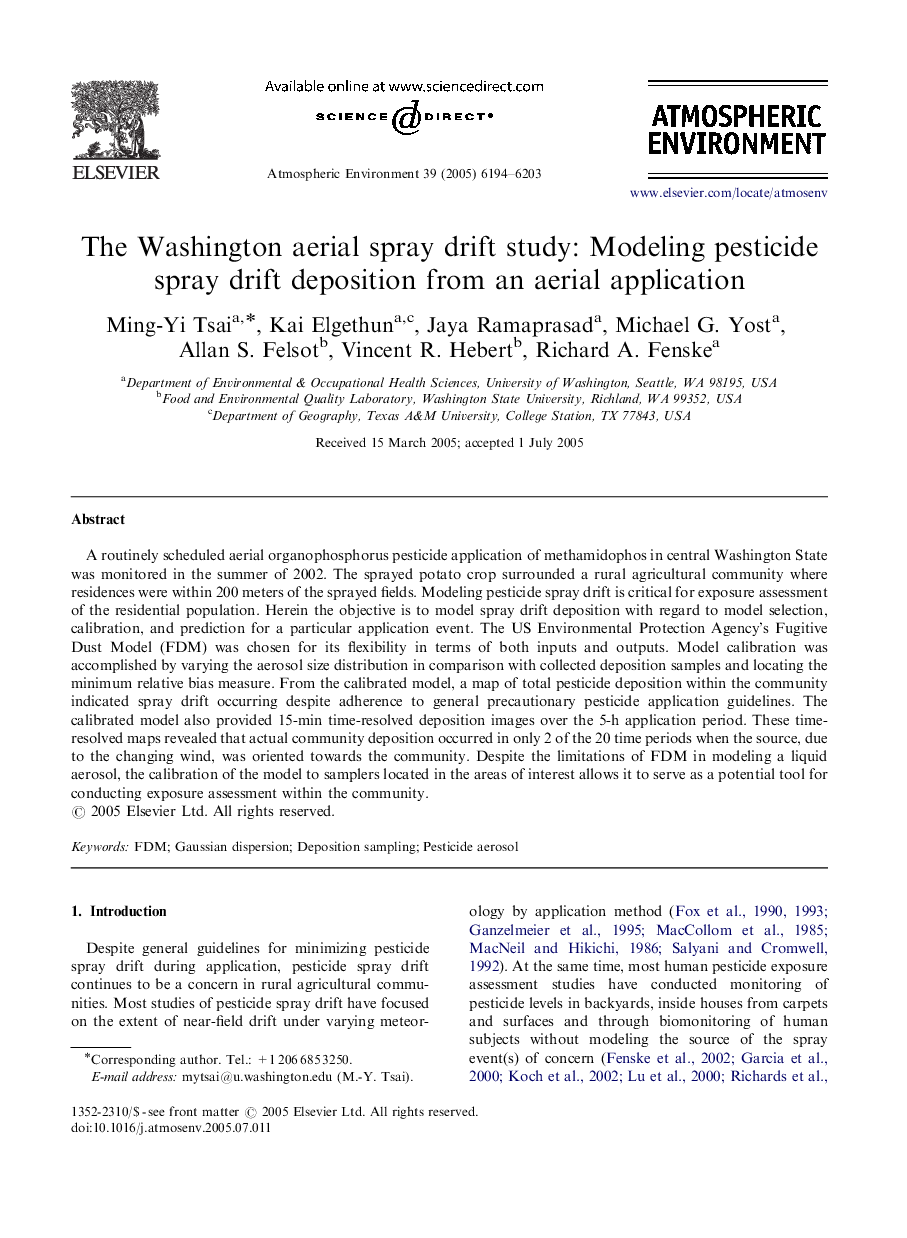| Article ID | Journal | Published Year | Pages | File Type |
|---|---|---|---|---|
| 4444634 | Atmospheric Environment | 2005 | 10 Pages |
Abstract
A routinely scheduled aerial organophosphorus pesticide application of methamidophos in central Washington State was monitored in the summer of 2002. The sprayed potato crop surrounded a rural agricultural community where residences were within 200 meters of the sprayed fields. Modeling pesticide spray drift is critical for exposure assessment of the residential population. Herein the objective is to model spray drift deposition with regard to model selection, calibration, and prediction for a particular application event. The US Environmental Protection Agency's Fugitive Dust Model (FDM) was chosen for its flexibility in terms of both inputs and outputs. Model calibration was accomplished by varying the aerosol size distribution in comparison with collected deposition samples and locating the minimum relative bias measure. From the calibrated model, a map of total pesticide deposition within the community indicated spray drift occurring despite adherence to general precautionary pesticide application guidelines. The calibrated model also provided 15-min time-resolved deposition images over the 5-h application period. These time-resolved maps revealed that actual community deposition occurred in only 2 of the 20 time periods when the source, due to the changing wind, was oriented towards the community. Despite the limitations of FDM in modeling a liquid aerosol, the calibration of the model to samplers located in the areas of interest allows it to serve as a potential tool for conducting exposure assessment within the community.
Keywords
Related Topics
Physical Sciences and Engineering
Earth and Planetary Sciences
Atmospheric Science
Authors
Ming-Yi Tsai, Kai Elgethun, Jaya Ramaprasad, Michael G. Yost, Allan S. Felsot, Vincent R. Hebert, Richard A. Fenske,
